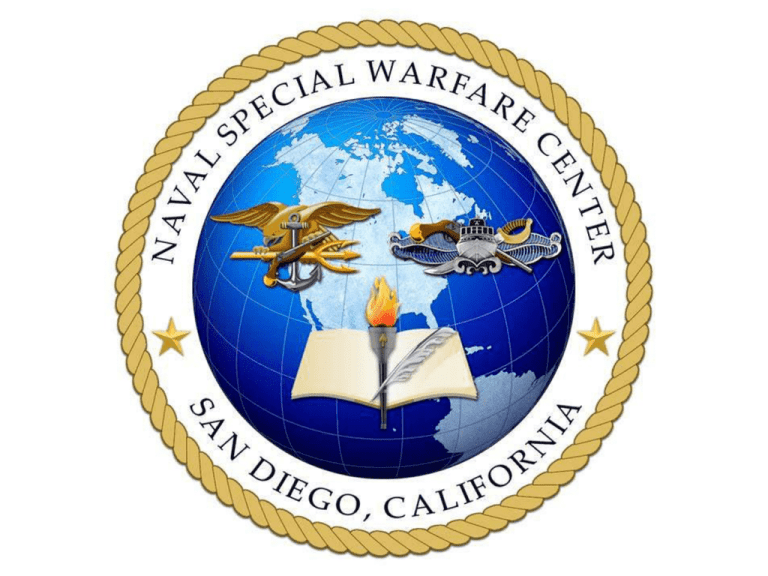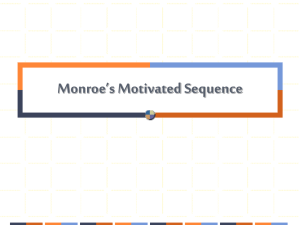The big four
advertisement

FOR OFFICIAL USE ONLY What do these guys have in common? Jeff Gross/Getty Images FOR OFFICIAL USE ONLY 2 The overall classification of this briefing is: UNCLASSIFIED - FOR OFFICIAL USE ONLY 3 FOR OFFICIAL USE ONLY What is Mental Toughness? • Control over stress under adversity • Your ability to understand and use your stress reactions to optimize your performance • Sharper focus, confidence, and resilience FOR OFFICIAL USE ONLY 4 FOR OFFICIAL USE ONLY Four Techniques to Learn and Practice • Focus on your performance objectives through goal setting. • Manage stress through arousal control. • Create and use experiences in your mind through visualization. • Use your awareness of your beliefs and their consequences through self talk. FOR OFFICIAL USE ONLY 5 FOR OFFICIAL USE ONLY Can the Big Four be Learned? • Scientific research says, “YES!” FOR OFFICIAL USE ONLY 6 FOR OFFICIAL USE ONLY Cold-water Breath-hold Study • Two groups were immersed to measure breathhold. • After measuring, one group was taught to use and practice the “big four.” • Both groups immersed and measured again. • The “big four” group outperformed by 80 percent. • The big four mental techniques helped control the cold-shock physical reflex! “Breath-Hold Performance During Cold Water Immersion: Effects of Psychological Skills Training” (Bartwood, Dalzell, Datta, Thelwell & Tipton, 2006) from Aviation, Space, and Environmental Medicine, Vol 77, No. 11, November 2006 FOR OFFICIAL USE ONLY 7 FOR OFFICIAL USE ONLY Tough starts here. FOR OFFICIAL USE ONLY 8 FOR OFFICIAL USE ONLY Human Stress Response • Fight or Flight: • Body’s primitive and automatic response to perceived danger • Starts HPA (Hypothalamic-pituitaryadrenal) axis Releases hormones , like adrenaline Control the HPA and you can control performance! FOR OFFICIAL USE ONLY 9 FOR OFFICIAL USE ONLY Physiological Reactions to Stress • • • • • • • • • Heart rate and blood pressure increase Blood vessels constrict (get smaller) Blood migrates from extremities Muscles tense Breathing (respiration) increases Pupils dilate Palms get clammy Tears and sweat decreases Adrenaline released FOR OFFICIAL USE ONLY 11 FOR OFFICIAL USE ONLY Cognitive Reactions to Stress • • • • • • • • Memory, concentration, and judgment suffer Inability to concentrate Confusion Repetitive or racing thoughts Anger and resentment Sense of being overwhelmed Lack of confidence Desire to escape or run away FOR OFFICIAL USE ONLY 12 FOR OFFICIAL USE ONLY P E R F O R M A N C E High Stress Response and Performance An “optimal” level of arousal Low FOR OFFICIAL USE ONLY AROUSAL High 13 FOR OFFICIAL USE ONLY Big Four • Goal Setting • Arousal Control • Visualization • Self-Talk 14 FOR OFFICIAL USE ONLY FOR OFFICIAL USE ONLY Goal Setting Focusing on your future skills and achievement Process Goals • Focus on the “how” Essential skills Things you can control Outcome Goals • Focus on achievement Milestones Progress Attainment 15 FOR OFFICIAL USE ONLY FOR OFFICIAL USE ONLY Why Goal Setting Works • Directs attention to important elements of a skill to be performed • Mobilizes effort • Enhances and prolongs persistence • Fosters development of new learning strategies 16 FOR OFFICIAL USE ONLY FOR OFFICIAL USE ONLY Goal Setting Principles • Segmenting • The technique of arranging and focusing upon smaller goals as manageable parts of a larger goal. • Breaking things into smaller periods of time or activities 17 FOR OFFICIAL USE ONLY FOR OFFICIAL USE ONLY Goal Setting Principles Eat the elephant one bite at a time. Eat the elephant one bite at a time. 18 FOR OFFICIAL USE ONLY FOR OFFICIAL USE ONLY Goal Setting Principles • Make sure goals are: specific and measurable difficult but realistic both long and short term • Set PROCESS goals • WRITE DOWN goals • Develop goal achievement STRATEGIES 19 FOR OFFICIAL USE ONLY FOR OFFICIAL USE ONLY Effective Goals: The SMART Approach • • • • • Specific Measurable Attainable Realistic Timely I will complete the 500 yard swim in 13:00 min. by the end of the third week of Prep. 20 FOR OFFICIAL USE ONLY FOR OFFICIAL USE ONLY Goal Setting Pitfalls • • • • • • Fuzzy goals Setting too many goals too soon Inflexible goals: failure to adjust Lack of PROCESS goals No follow-up and evaluation Failing to recognize individual differences 21 FOR OFFICIAL USE ONLY FOR OFFICIAL USE ONLY Arousal Control P E R F O R M A N C E High Low FOR OFFICIAL USE ONLY An “optimal” level of arousal! AROUSAL High 22 FOR OFFICIAL USE ONLY Arousal Control • Controlling the human stress response • Theory of Fours: Breath Control Inhale: 4 seconds Exhale: 4 seconds Continue 4-6 minutes 23 FOR OFFICIAL USE ONLY FOR OFFICIAL USE ONLY Theory of Fours: Why it works • Normalizes human stress response (controls stress symptoms) • Forces people to focus on breathing vice stressor • “Centered-breathing” 24 FOR OFFICIAL USE ONLY FOR OFFICIAL USE ONLY What is Visualization? • Creating or recreating an experience in the mind • AKA: visualization, mental rehearsal / practice 25 FOR OFFICIAL USE ONLY FOR OFFICIAL USE ONLY Why Visualization Works • Vividly imagined events stimulate muscles like actually practicing a movement • Visualization creates a motor program in the central nervous system • Visualization improves concentration, reduces anxiety, builds confidence • If visualized properly, the first time you see the “real” event is actually the second time your mind has seen it. 26 FOR OFFICIAL USE ONLY FOR OFFICIAL USE ONLY Involve all of the Senses: • Visualize (70%) see yourself do a perfect sidestroke cycle into the glide • Hear (20%) the bubbles as you exhale during the bobbing • Smell (5%) the air on your breathing cycle / clean air vs. fumes / odors • Touch/Feel (4%) water flow over your body • Taste (1%) the chlorine 27 FOR OFFICIAL USE ONLY FOR OFFICIAL USE ONLY Does Visualization Work? • Anecdotal reports, case studies, and scientific experiments suggests that it improves performance 90% of Olympic athletes use some form of visualization; 97% of them felt it helped 94% of Olympic coaches used visualization during training, with 100% of them noting it enhances performance 28 FOR OFFICIAL USE ONLY FOR OFFICIAL USE ONLY Uses of Visualization • • • • • • 20% everyday 40% 3-5 days a week 80% for competitive event preparation 48% for technical errors 44% for new skills 40% for relaxation 29 FOR OFFICIAL USE ONLY FOR OFFICIAL USE ONLY Uses of Visualization • • • • • • Improve concentration Build confidence Control emotional responses Practice sport / tactical skills Practice strategy Cope with pain and injury 30 FOR OFFICIAL USE ONLY FOR OFFICIAL USE ONLY Types of Visualization • INTERNAL Visualization: imagining execution of a skill from your own vantage point ( as if you have a camera on your head) • EXTERNAL Visualization: view yourself from the perspective of an external viewer 31 FOR OFFICIAL USE ONLY FOR OFFICIAL USE ONLY Basics of Visualization Training VIVIDNESS CONTROL • Use all of your senses • Manipulate your images • Create or recreate as closely as possible the actual experience • Make them do what you want them to • Include emotions and thoughts 32 FOR OFFICIAL USE ONLY FOR OFFICIAL USE ONLY What is Self-Talk? • Your internal dialog and beliefs affect your performance. Past experiences Biases Prejudices Stereotypes • ABC Model: • Activating Event Belief Consequence 33 FOR OFFICIAL USE ONLY FOR OFFICIAL USE ONLY Relationship Between Beliefs and Reactions • Negative symptoms / consequences • Identify your own patterns ID negative beliefs that lead to negative outcomes ID positive beliefs that lead to positive outcomes 34 FOR OFFICIAL USE ONLY FOR OFFICIAL USE ONLY ABC - Control / Results Activating Event (Little to No Control) A Drown-proofing FOR OFFICIAL USE ONLY Beliefs (Total Control) B Consequences (Human Stress Response) C Negative Belief: I’ll sink and not be able to hold my breath Negative Result: Panic, DOR Positive Belief: I can adapt to my body’s buoyancy and adjust my breathing, with practice Positive Result: Overcome anxiety quickly and drown-proof successfully 35 FOR OFFICIAL USE ONLY How Self-Talk Works • Thoughts influence emotional / physiological responses • Events themselves do not lead to emotional / physiological responses • Self-talk plays a key role in our reactions to situations 36 FOR OFFICIAL USE ONLY FOR OFFICIAL USE ONLY Technique to Improve Self-Talk Activating Event (Little to No Control) A I failed 500 yd swim Beliefs (Total Control) B Negative belief: I’m not a natural swimmer Thought Replacement Consequences (Human Stress Response) C I can practice harder to pass the swim Improve confidencefewer stress symptoms Pass the swim Understand your personal belief system Use thought replacement! FOR OFFICIAL USE ONLY 37 FOR OFFICIAL USE ONLY When to Use the Techniques: Timing is Everything! Goal Setting Self-Talk Self-Talk Arousal Control Arousal Control? Goal Setting? Visualization Goal Setting? Self-Talk Note: Arousal control and goal setting may have minimal impact during the event Note: After the event, goals can be modified before the next event 38 FOR OFFICIAL USE ONLY FOR OFFICIAL USE ONLY Mental Toughness Summary • The “Big Four” techniques Goal setting Arousal control Visualization Self-talk (ABC theory) FOR OFFICIAL USE ONLY 39







